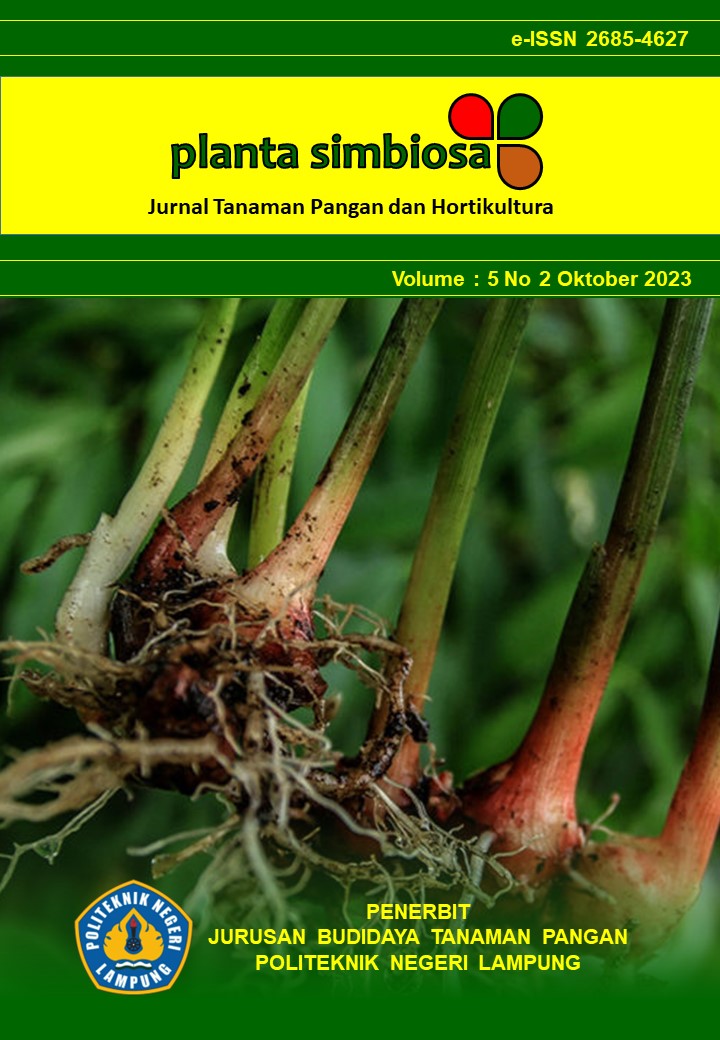Ginger Patogens Diversity at The Seedlings Stage
Ginger Patogens Diversity at The Seedlings Stage
DOI:
https://doi.org/10.25181/jplantasimbiosa.v5i2.3266Abstract
Ginger production has decreased over the past year and this could be due to less than optimal plant cultivation. Selection of quality seeds and optimal standards will provide optimal production impacts. Early detection of pathogens in ginger seeds can be an effort to maintain production potential. The aim of this research is to identify the diversity of ginger pathogens that appear in nurseries as an effort to maintain the production potential of ginger plants. This research looked at the pathogens that appeared in red ginger, emprit ginger and elephant ginger which were sown in burlap sacks for one month. Disease symptoms that appear during observation were observed and isolated and were identified the pathogen. Observation results showed that red ginger's healthy rhizome was higher than other ginger. Pathogens identified in three types of ginger include Sclerotium rolfsii, Penicillium sp and Aspergillus sp. Sclerotium rolfsii is the dominant pathogen and has a high attack rate on elephant ginger clones. Keywords: Sclerotium rolfsii, Zingiberales officinale, RhizomeDownloads
Download data is not yet available.
Published
2023-11-01
How to Cite
Putri, S., Darma, W. A., Tiara, D., & Septiana, S. (2023). Ginger Patogens Diversity at The Seedlings Stage: Ginger Patogens Diversity at The Seedlings Stage. J-Plantasimbiosa, 5(2), 15-21. https://doi.org/10.25181/jplantasimbiosa.v5i2.3266
Issue
Section
Artikel








